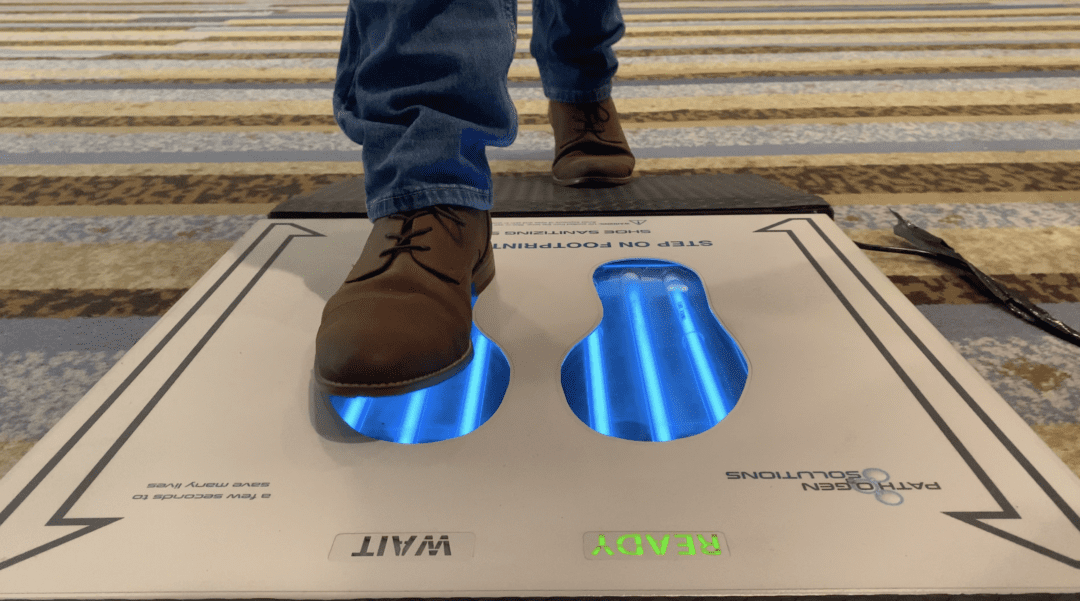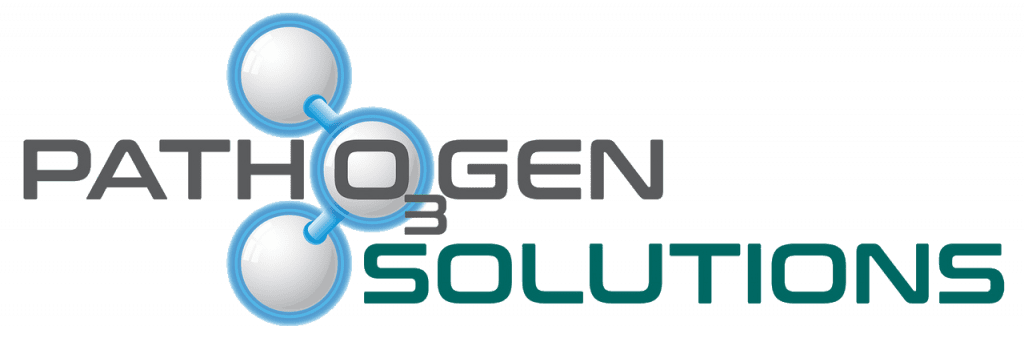
In the fast-paced world we live in, where every surface potentially hosts a myriad of microorganisms, hygiene has taken center stage in our daily lives. One overlooked aspect, however, remains our shoes. As we go about our day, we step on various surfaces, each teeming with invisible life forms that could harm our health. This is where shoe sanitization comes into play, a practice that has recently gained significant attention.
The Importance of Shoe Sanitization
Shoe sanitization is vital to prevent the spread of harmful bacteria, fungi, and viruses that can cause illnesses in humans. Our shoes come into contact with a variety of surfaces, from public restrooms and city sidewalks to hospital floors and office buildings. Each step potentially picks up and transports thousands, if not millions, of harmful microorganisms.
In healthcare settings, for example, shoe sanitization is critical to prevent the spread of healthcare-associated infections (HAIs). Similarly, in food production and processing facilities, proper shoe sanitation protocols can help prevent foodborne illnesses.
But it’s not just these environments that benefit from shoe sanitization. Even in our homes, keeping our shoes clean can help maintain a healthier living environment, especially if we have young children, elderly individuals, or immunocompromised individuals.
The Evolution of Shoe Sanitization Methods
The concept of shoe sanitization isn’t new. It has been around for decades, albeit in rudimentary forms. Initially, the common practice was to use mats soaked with disinfectant solutions at entry points, a method still used in some areas today. However, this method is not entirely effective, as it doesn’t ensure a thorough cleanse, and the disinfectant can quickly become contaminated, leading to the spread rather than the elimination of pathogens.
The advent of technology brought about new sanitization methods like shoe covers and shoe sanitizing machines. Shoe covers are disposable and used primarily in healthcare and industrial settings. They act as a barrier between the shoe and the floor but don’t actively kill pathogens.
Shoe sanitizing machines, on the other hand, were a significant step forward. These machines use various methods, including steam, heat, and chemicals, to sanitize the shoes. However, these methods can be time-consuming, costly, and potentially damaging to the shoes.
The latest innovation in this space is the UV shoe sanitizer. This revolutionary technology harnesses the power of ultraviolet light to kill bacteria, fungi, and viruses effectively and efficiently. UV shoe sanitizers have proven to be a game-changer, providing a quick, cost-effective, and eco-friendly solution to shoe sanitization. This technology’s advent has not only made shoe sanitization more accessible but also significantly improved its effectiveness.
Understanding UV Technology
As we delve into the world of UV technology, it’s crucial to understand what ultraviolet light is and how it plays a significant role in eliminating microorganisms. This powerful light spectrum has been harnessed for a variety of uses, from sterilization in healthcare facilities to purification of drinking water. Now, it’s proving to be a game-changer in the realm of shoe sanitization.
What is Ultraviolet Light?
Ultraviolet (UV) light is a type of electromagnetic radiation that sits just beyond the violet end of the visible light spectrum in the electromagnetic spectrum. It’s invisible to the human eye, but its effects are far from imperceptible. UV light is divided into three categories based on wavelength: UVA, UVB, and UVC.
While UVA and UVB rays are familiar to most of us due to their association with sunburn and skin cancer, it’s the shorter wavelength UVC that’s of interest in sanitization applications. UVC light, also known as germicidal UV light, has a wavelength range of 200-280 nanometers. This light is highly effective at inactivating microorganisms, which makes it an ideal tool for sterilization and disinfection.
How Does UV Kill Microorganisms?
UV light, specifically UVC, eliminates microorganisms like bacteria, viruses, and fungi by damaging their genetic material—either their DNA or RNA. When UVC light penetrates the cells of microorganisms, it causes a molecular rearrangement of their DNA or RNA, which prevents the organisms from reproducing and infecting. This process is known as photodimerization.
In simpler terms, while the microorganisms might still be present, they are rendered harmless as they cannot replicate. This neutralizes their threat, making the environment safe for humans. The quick and efficient disinfection process provided by UVC light makes it an ideal choice for applications like the UV shoe sanitizers, where rapid, reliable sanitization is a necessity.
The beauty of using UV light for sterilization is its non-chemical nature. Unlike traditional disinfectants, UV light doesn’t leave behind any residue, making it an environmentally friendly alternative. It’s important to note, though, that while UV light is excellent for inactivating microorganisms, it can be harmful to human skin and eyes, which is why it must be used in controlled settings, like inside a UV shoe sanitizer.
The Advent of UV Shoe Sanitizers
As we’ve established, shoes can carry a significant number of microorganisms, contributing to the spread of harmful pathogens. Traditional sanitization methods fall short in effectively combating this issue. However, with the advent of UV technology in shoe sanitization, we’re witnessing a revolutionary approach to hygiene.
The Concept Behind UV Shoe Sanitizers
The concept of UV shoe sanitizers is based on the premise that prevention is better than cure. By targeting a primary source of microbial contamination – our shoes – these devices aim to cut off a major avenue for the spread of pathogens.
UV shoe sanitizers blend the potent germicidal properties of UVC light with a practical design that makes sanitization quick, easy, and effective. These devices are designed to accommodate different types of footwear and work swiftly to deactivate a broad range of harmful microorganisms.
How UV Shoe Sanitizers Work
UV shoe sanitizers, like the UVZone® Shoe Sanitizer, function by exposing the soles of shoes to UVC light. Here’s a step-by-step of how they work:
- Placement: The user places their shoe onto the sanitizing station, making sure the entire sole is within the device.
- Exposure to UVC Light: Once the shoe is in place, UVC light targets the sole, penetrating microorganisms present and damaging their DNA or RNA.
- Inactivation of Microorganisms: The DNA or RNA damage renders the microorganisms unable to reproduce, effectively neutralizing them.
- Completion: After a short duration (typically 6-10 seconds), the sanitization process is complete, and the shoe is safe to proceed.
The UV shoe sanitizing process is not only quick and easy but also non-intrusive and chemical-free, making it an ideal choice for facilities that require high levels of cleanliness and hygiene. This technology has the potential to significantly reduce the spread of pathogens, contributing to a safer and healthier environment.
Benefits of Using UV Shoe Sanitizers
The integration of UV shoe sanitizers into sanitation protocols offers numerous advantages. These benefits extend beyond the obvious implication of reduced pathogen spread, contributing to various facets of operational efficiency, environmental sustainability, and user convenience.
Efficiency in Killing Pathogens
The primary benefit of UV shoe sanitizers is their potent ability to kill a wide range of pathogens. Devices like the UVZone® Shoe Sanitizer have demonstrated significant efficacy against various bacteria, viruses, and fungi, including Escherichia coli, Staphylococcus aureus, Candida auris, and even the Human Coronavirus.
UV technology’s broad-spectrum antimicrobial action enables it to deactivate pathogens that many chemical disinfectants cannot eliminate. This makes UV shoe sanitizers an incredibly powerful tool in the fight against infectious diseases.
Environmental Advantages
UV shoe sanitizers have a distinct environmental advantage as well. Unlike chemical sanitizers, UV sanitizers do not leave any residue or contribute to chemical waste. The UV sanitization process is a physical one that alters the genetic material of microorganisms without adding or subtracting anything from the environment.
Furthermore, UV sanitizers are a sustainable option as they do not consume a lot of power and have a long lifespan. This makes them a green alternative to many traditional sanitization methods.
Ease of Use and Maintenance
The design and operation of UV shoe sanitizers are intentionally made user-friendly. Devices like the UVZone® Shoe Sanitizer require a simple step-on mechanism to activate, and the sanitization process takes just a few seconds.
In terms of maintenance, UV shoe sanitizers are easy to clean and do not require any special materials or skills for upkeep. The bulbs used in the sanitizers have a long lifespan and are easy to replace when needed.
In an employee survey, 97% of respondents agreed that UVZone® Shoe Sanitizers are easy to use, reinforcing the idea that these devices can be seamlessly integrated into daily routines to significantly enhance sanitation protocols.
Applications of UV Shoe Sanitizers
UV shoe sanitizers, given their effectiveness and ease of use, have a wide range of applications across different sectors. They are particularly useful in settings that require high standards of hygiene and where there is a high risk of microbial transmission.
In Healthcare Settings
In healthcare settings, preventing the spread of pathogens is a matter of life and death. Hospitals, rehabilitation centers, long-term care facilities, and surgery centers are places where both patients and healthcare workers are at risk of acquiring and spreading infections.
UV shoe sanitizers can be an essential part of the solution in these settings. They can be placed at the entrances of sensitive areas like intensive care units, operating rooms, or patient wards. The use of UV shoe sanitizers can significantly decrease the risk of pathogens being transported on shoes, thereby enhancing patient safety and preventing costly hospital-acquired infections.
In Food Production and Processing
Food production and processing facilities also require strict hygiene protocols to prevent foodborne illnesses. Salmonella, E. coli, and Listeria are just a few of the pathogens that can spread from contaminated shoes to the food production environment.
The use of UV shoe sanitizers in these settings can help to maintain food safety standards. They can be used at the entrances of animal production facilities, animal feed mills, meat, egg, and dairy processing plants, and food manufacturing facilities to minimize the risk of cross-contamination.
In High-Traffic Public Spaces
High-traffic public spaces like airports, shopping malls, schools, and office buildings are areas where diseases can spread quickly due to the high volume of people. In these settings, the use of UV shoe sanitizers can help to minimize the spread of pathogens, contributing to public health.
In the wake of the COVID-19 pandemic, which highlighted the importance of hygiene in public spaces, the use of UV shoe sanitizers can be a visible and effective measure to reassure the public that safety is being taken seriously. It’s a practical, convenient, and quick solution that helps to keep shared spaces cleaner and safer for everyone.
Choosing the Right UV Shoe Sanitizer
Choosing the right UV shoe sanitizer involves careful consideration of several factors. It’s not just about the product’s effectiveness in killing pathogens, but also its ease of use, durability, and suitability for your specific setting.
Factors to Consider
- Effectiveness: The primary purpose of a UV shoe sanitizer is to kill harmful pathogens effectively. It’s important to look for a model that has been tested and proven to eliminate a wide range of microorganisms.
- Ease of Use: An effective UV shoe sanitizer should be easy to use. The process should be quick and require minimal effort from the user.
- Durability and Maintenance: Given the high-traffic nature of the locations where these sanitizers are used, they need to be durable and require minimal maintenance.
- Fit for Your Setting: Consider the specifics of your location. Does it accommodate a shoe sanitizer’s size and design? Is it compatible with the volume of foot traffic in your facility?
Recommended UV Shoe Sanitizer Models
While there are several models on the market, one that stands out for its proven effectiveness, user-friendliness, and robustness is the UVZone® Shoe Sanitizer from PathO₃Gen Solutions.
The UVZone® Shoe Sanitizer uses a combination of UV-C and ozone technology to eliminate 99.999% of dangerous pathogens, including bacteria, viruses, and fungi. It’s been tested by leading independent labs like NSF International Laboratories, Microchem Laboratory, CREM Co. Labs, and the University of Minnesota Veterinary Diagnostic Laboratory, showing its effectiveness against a wide array of pathogens.
This sanitizer is easy to use, with a quick sanitation process that takes only 6-10 seconds. Its design is suitable for high-traffic settings and requires minimal maintenance. Plus, it’s easily cleaned and sanitized, further adding to its convenience.
Given these attributes, the UVZone® Shoe Sanitizer is a solid choice for healthcare facilities, food production and processing facilities, and high-traffic public spaces. It serves as a visible sign of your commitment to safety and hygiene, offering reassurance to staff, patients, visitors, and customers alike.
Revolutionizing Public Health: The Future of UV Shoe Sanitization
As we look towards the future, the importance of shoe sanitization in protecting public health and safety will only continue to grow. Technological advancements, like UV shoe sanitizers, are becoming critical tools in our fight against harmful pathogens.
Navigating the Path Ahead: UV Shoe Sanitization in the Future
The future of shoe sanitization is bright, promising increased efficiency, ease of use, and effectiveness. With the advent of new technologies, we are poised to see even more innovative methods and devices that can further enhance public health safety measures.
Research into the transmission of diseases is also evolving, with growing recognition of shoes as vectors for harmful pathogens. This understanding underscores the need for effective sanitization methods like UV shoe sanitizers.
The UV shoe sanitization technology is still young and ripe for further development and refinement. As this technology matures, we can expect to see even more powerful and efficient models that offer greater coverage, faster sanitization times, and improved ease of use.
The Role of UV Shoe Sanitizers in Enhancing Public Health
UV shoe sanitizers play a pivotal role in public health, especially in high-risk settings like healthcare facilities, food production and processing facilities, and public spaces with high foot traffic.
They offer an effective and environmentally-friendly solution to reducing the spread of harmful pathogens. By eliminating microorganisms on shoe soles, these devices help to decrease the risk of infection spread, thereby protecting the health of individuals and communities.
The UVZone® Shoe Sanitizer from PathO₃Gen Solutions is a prime example of how UV shoe sanitization technology can be harnessed to improve public health. By integrating such solutions into their hygiene protocols, facilities can significantly enhance their defense against harmful pathogens and contribute to a safer, healthier future for all.
In conclusion, UV shoe sanitizers represent a revolutionary step forward in our ongoing battle against disease-causing microorganisms. Their role in safeguarding public health is expected to grow as technology advances and awareness of their benefits becomes more widespread.
If you’re interested in learning more about how UV shoe sanitizers can benefit your facility, or if you’d like to schedule a demo of the UVZone® Shoe Sanitizer, don’t hesitate to contact us at 727-300-1069 or schedule a demo today. Join us in revolutionizing public health, one step at a time.

